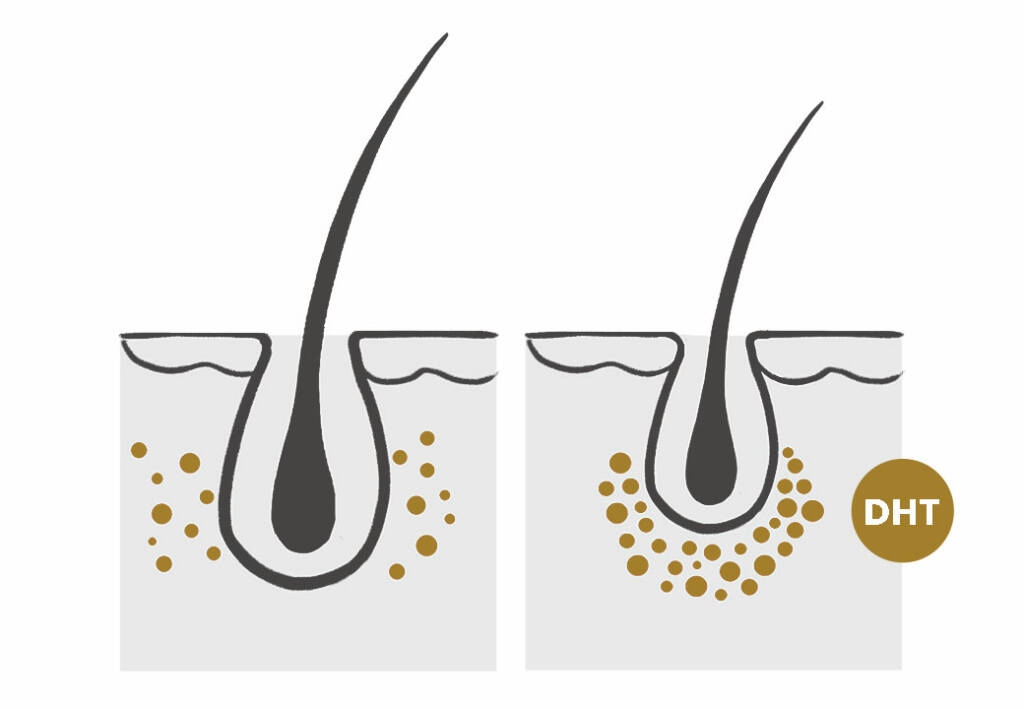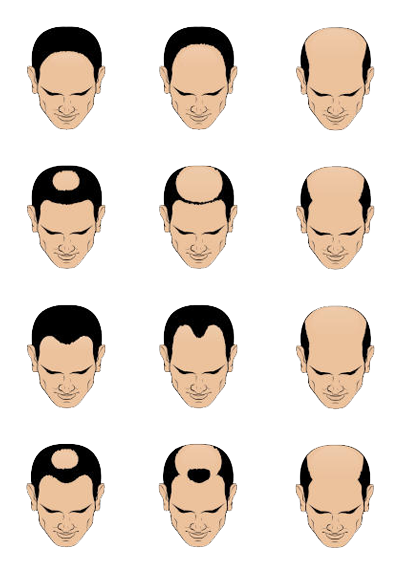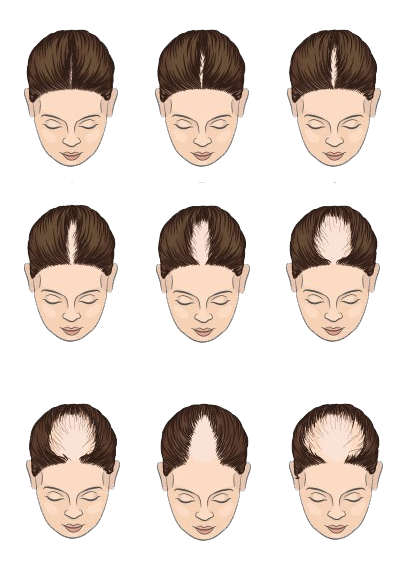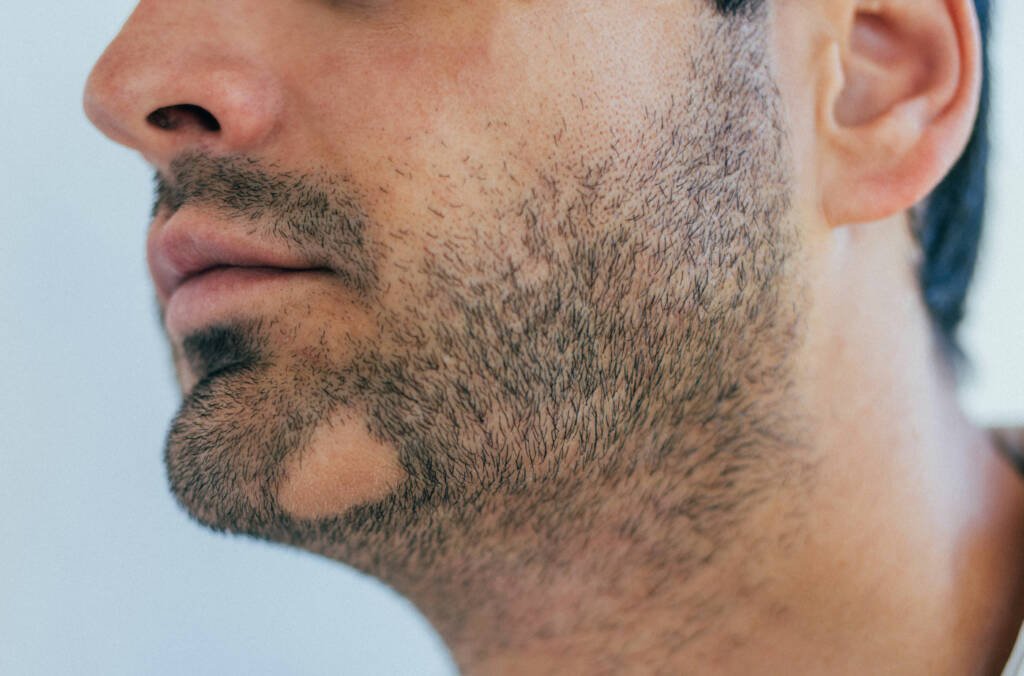How does hair loss occur?
Hair loss can have many different causes. The most common cause of hair loss in men and women is hereditary hair loss, or androgenetic alopecia. This involves a genetically determined sensitivity of the hair follicles to the hormone dihydrotestosterone (DHT), causing the hair’s growth cycle to shorten and eventually stop. Besides hereditary baldness, (hair) diseases, hormone fluctuations, stress and medication use can also cause hair loss.

Is it Hereditary hair loss?
A hair growth cycle normally lasts two to five years and follows three phases: first, hair growth is active, followed by a period of rest, after which hair finally falls out. Excessive natural hair loss occurs when this growth phase is disrupted. In hereditary baldness, DHT is that disruptor. Around 80% of men who experience hair loss are affected by this hereditary form of hair loss.
Miniaturisation of hair
Typically with hereditary hair loss, hairs become increasingly thin. DHT, which binds to the receptors (´antennae´) of hair follicles, causes hair follicles to shrink and shortens the hair’s growth phase. The follicles remain, but develop increasingly shorter and thinner hairs: the so-called miniaturisation of hair. Thus, androgenetic alopecia develops gradually: each hair cycle ends with thinner hair. Eventually, the hair falls out permanently and does not grow back.

A recognisable pattern
In hereditary baldness, the hairs on both sides and the back of the head do not fall out. This area is also called the ‘Hippocratic wreath’. This is because these hairs are not sensitive to the hormone DHT. Hairs above the wreath, however, can be sensitive to DHT. This causes (in men) a recognisable pattern of a receding hairline, inlets and hair loss from the crown.
The impact of hair loss
Being or becoming bald can be very drastic. In this video, our doctor Kristel van Herwijnen describes the impact of hair loss in men and women.
Patterns of baldness
Although hereditary baldness is also called ‘male pattern baldness’, it occurs in men and women. It does have a different manifestation: in men, it can be recognised by hair diminishing on the crown or near the inlets. A process that can start as early as puberty. In women, androgenetic alopecia usually begins as a thinner hairline, often starting from the hairline.
Genetic cause
Strictly speaking, androgenetic alopecia is not a disease or disorder, but an ageing phenomenon that is largely genetic. Variations in the dna that cause it have been discovered in the androgen receptor, but not all the responsible genes have yet been identified.
People who experience it (early) usually experience baldness as very unpleasant. For example, (young) women in whom baldness is highly visible. It can also be very stressful for men in whom baldness starts at an early age. Baldness often has a major impact on quality of life.


Step one: a medical diagnosis
Hereditary baldness is easy for a professional to diagnose because it follows a set pattern. If this is not the case, then hair loss can have several other causes, for instance hair disease, hormones, cosmetics and various other external factors. Therefore, comprehensive medical examination and proper diagnosis is always the first step of a treatment programme.
Hair disease - Alopecia Areata
Another common hair problem is alopecia areata, or patchy baldness. This is an autoimmune condition that often starts with bald patches on the head that can spread to the rest of the body. A well-known problem in men are bald patches in the beard, but the condition can also cause complete baldness. This hair disease usually occurs suddenly. Stress often plays a role.


Get the best information
For many forms of baldness, a hair transplant offers a definitive solution. Of all the hair transplant options, treatment using the HST method gives the most beautiful, natural result. A professional diagnosis by a doctor is always step one when exploring treatment options.
In a free consultation with one of our doctors, we thoroughly discuss your personal situation and wishes. Based on this intake, we will give you a tailored advice and a transparent quotation.

